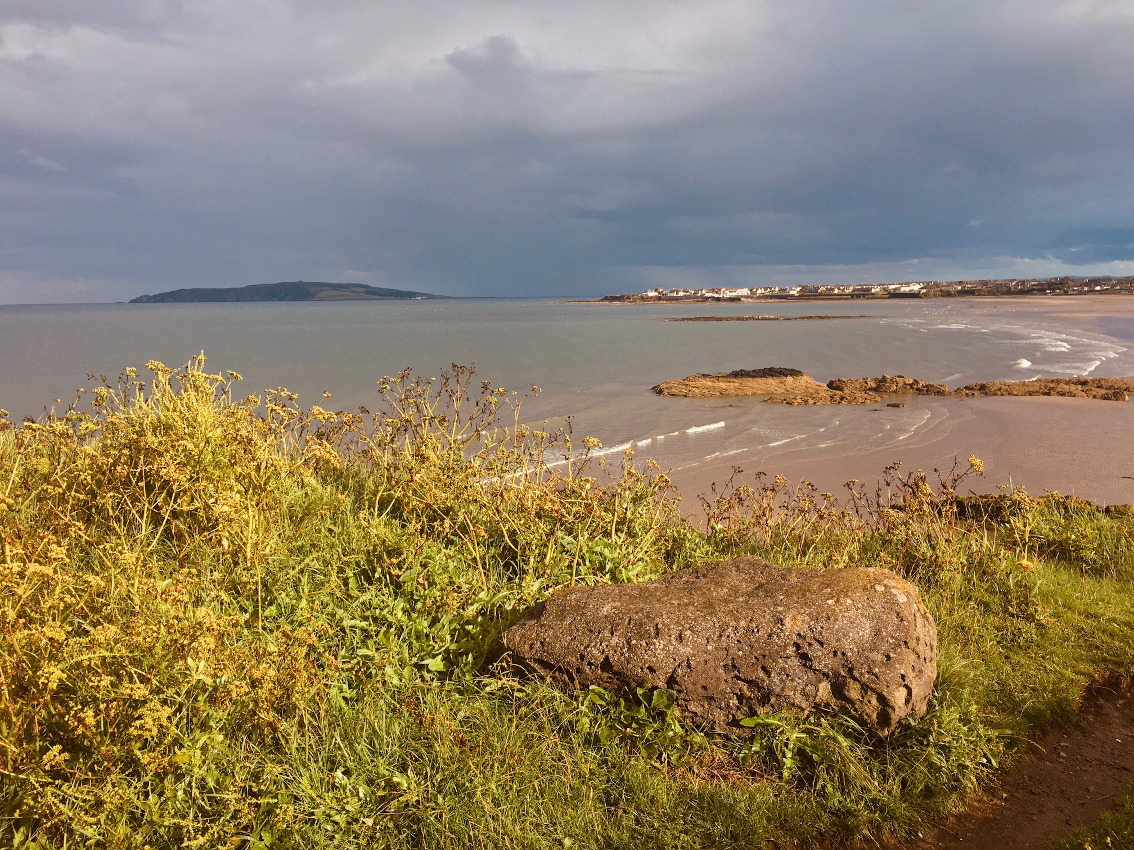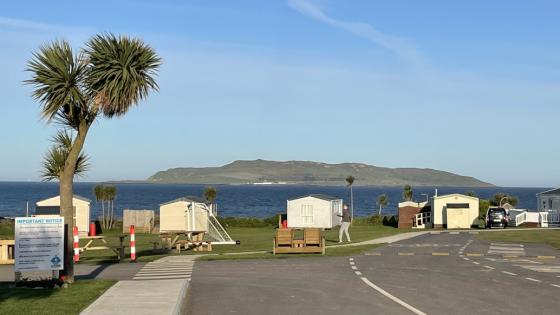There are some sites that hold an enduring fascination, even though, because of their ruinous condition, they are well past their sell by dates. It could be their location, or the tantalising tales of what once was, or it could be a je ne sais quois, a more regular feeling about a lot of these places. It could also be the grim determination that one feels, that no matter what remains and no matter how insubstantial it is, we will bear witness, gripped as we are by endless curiosity, nagging impulse and barmy nerdishness. It could be any, or all, like Rush today, of these.
Drive or walk north out of Rush village (now an ever-expanding town) on the Skerries road and the first turn on the right is Six Cross Lane. This leads down to the north beach of Rush with its caravan parks and holiday homes. Take this, the more adventurous route, to access the site (There is a track 150 metres further north that leads to an easier route, but it was waterlogged and muddy today and was only suitable for wellies, not my cheap Lidl walking boots).
From the north beach, walk north towards the promontory where the remains lie, rounding a small headland and fording the stream that flows through the deep gully. You can ascend, with mild difficulty, the path where the stream meets the beach. Follow the track past the cabbage fields, east onto the promontory and skirting the cliff-edge and there you have it.
It’s true that keeping one’s expectations low seldom leads to disappointment, and from reading the various sources, I wasn’t expecting much. There are more remains here than I have read about in any of the mentions I’ve found, but when one reads that this was a conical mound, thirty metres in diameter with a ten metre long passage and a 2.4 metre long chamber, one realises that these remains are scant indeed. But today is really about location and sensation and determination and relief.
Three contiguous stones still stand in the undergrowth and cairn rubble that separates the penultimate field of the small promontory from the field beyond. They look like kerbstones. It’s not much to hold on to, they’re not mentioned anywhere else, but there they are. Just over the rubble in the corner of the last field, beside the track, lies a large, loose boulder, said definitively to be from the the tomb. Were this all that remains, other than the written words of what once was, disappointment may have sunk in, but no – what is here ought to be examined and preserved, but probably won’t.
I’d been up the road in Skerries earlier and had gotten lashed on. The two sites I’d visited there deserved more attention than I’d managed, but here the sun had emerged. I’d almost given up when I’d seen the waterlogged, muddy track, had returned to the car and started to head for home. Then the pull kicked in. Fuck it. I turned the car around and sought another route, not fully believing there was a way, but there was a will.
Herity says that the mound “had been more than half-destroyed when W.P. Newenham saw the site in 1838.” I’ve driven past the location many a time and wondered was the whole thing just wiped away, pulled apart and ploughed into the ground. Well not all of it. There are traces still, tantalising, like the sensation one has looking across to distant, private Lambay, just out of reach but still possible. The colours of the day were emerging from the greyness that has dominated this last four or five weeks of this unique pandemicked summer. Sun was breaking through as the rain fled across the Irish sea and I didn’t want to leave but had to.



























